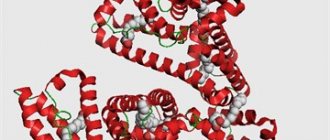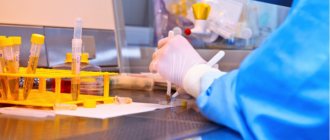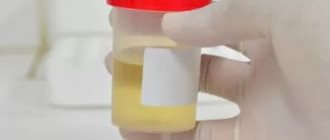Normally, an adult produces about 1–2 liters of urine per day. Its amount depends on age, drinking regime, ambient temperature, and the presence of pathologies.
About the role of calcium in the body
With proper metabolism, the calcium content in the body is always in a balanced state, and the release of this element from the body per day is normally always equal to its absorption in the intestinal tract.
The amount of calcium salts excreted in the urine will depend on the filtration of calcium by the urinary system. In the glomeruli of the kidneys, ionized calcium and calcium, complexed with low molecular weight anions, are filtered, and then, under the influence of parathyroid hormone, a reabsorption process occurs, during which 85-98% of the filtered calcium salts are returned to the body.
That is why it is very important to conduct a urine test for calciuria, during the assessment of which it becomes possible to determine low or high calcium levels in urine.
How to donate urine
To measure calcium in the blood, there are two types of tests. The total Ca assay calculates both the free and bound forms. The ionized calcium test measures only the free form of this substance. To measure it, the doctor prescribes a biochemical test of blood and urine.
A blood test is taken from a vein. If a urine calcium test is done, a 24-hour collection is examined, although urine collected over a different, shorter period may also be examined.
Studying urine collected during the day is more preferable than analyzing urine collected at one time, due to the fact that all processes in the body occur cyclically. This means that at one time the substance is excreted by the kidneys in larger quantities, at other times in smaller quantities. Daily collection allows you to identify the average value, which will allow the attending physician to perform a more accurate analysis.
To collect urine in 24 hours, you need to do the following. After waking up in the morning, empty your bladder into the toilet. This urine is not used for analysis. In this case, you need to note the time. Over the next 24 hours, drain all urine into a prepared container. When 24 hours have passed, you need to wait for the next urination and empty your bladder into a container. This is the last portion of urine. After this, the container with the 24-hour urine sample should be delivered to the laboratory or placed in the refrigerator for storage if immediate delivery is not possible.
Testing for calcium in urine does not require prior fasting. Your doctor should give detailed instructions before collecting urine. He or she may advise you not to take certain medications (lithium, antacids, diuretics, vitamin D supplements) before the urine calcium test to make your urine calcium results more accurate.
The role of calcium in the children's body
The body's calcium content is approximately 2% of total body weight, and most of it (99%) is found in bone tissue. If necessary, the element is released from the bones; this process is regulated by the parathyroid gland. 1% of the mineral, circulating in the bloodstream, takes part in many vital processes.
The mineral enters the body with food, absorption occurs in the small intestine. The substance is excreted in urine and feces.
Calcium performs a number of important functions in the child’s body:
- provides strength to bones and teeth;
- strengthens the connective tissue of cells;
- participates in the process of passing nerve impulses from the brain to the muscles;
- normalizes blood pressure;
- enhances the effect of prothrombin, which is responsible for blood clotting;
- coordinates and maintains normal activity of the cardiovascular system;
- normalizes insulin synthesis;
- helps improve immunity.
Description
Testing calcium in urine. The analysis, the purpose of which is to determine the concentration of Ca2 cations in daily urine, reflects the characteristics of calcium metabolism, especially in bone tissue. It is performed in combination with blood and urine tests for electrolytes, hormones and vitamin D. The test is in great demand in nephrology, endocrinology, trauma and nutrition. It is used to evaluate the pituitary, thyroid and parathyroid glands for the diagnosis and monitoring of osteoporosis, rickets, renal failure, urolithiasis and malabsorption syndrome. For the study, urine collection is necessary throughout the day. The analysis is carried out by photocolorimetry. Typically in patients over 14 years of age, values obtained range from 2.5 to 7.5 mmol/day. Preparing the results takes no more than one day.
In what cases is a test to determine the level of calcium in urine prescribed?
A high need for calcium appears in newborns, and as the body grows, normal levels of the trace element are crucial for the health of the child. An increase or decrease in the level of a mineral in the body may not appear for a long time, which is especially difficult to notice in children. The first symptoms are most often detected when the indicators have already reached critical values. The real situation is clarified only as a result of laboratory research.
The pediatrician will give a referral for a urine test if the following symptoms are detected:
- constant weakness and fatigue;
- vomiting and attacks of nausea;
- loss of appetite;
- pain in the epigastric region;
- constipation;
- urinating too frequently;
- constant thirst.
In addition, you should undergo examination for pathologies of the parathyroid and thyroid glands, skeletal system, kidneys, and digestion. Analysis is also required if the diet is poor and monotonous.
How to prepare for the test
To significantly reduce the risk of receiving erroneous readings, it is important to prepare properly. The doctor tells you how to prepare during the consultation and when submitting a referral for analysis. 2-3 days before the delivery of the material, you must fulfill the basic requirements:
- maintain hygiene of the external genitalia during the period of collecting material;
- on the eve of the study, remove from the diet foods that contribute to urine coloring: beets, bright berries, carrots;
- limit the consumption of spicy, fatty, salty and very sweet foods;
- You should maintain your usual drinking regimen throughout the day;
- stop using chemicals.
In cases where taking medications is vital, you should not stop taking them. To correct the accuracy of the analysis indicators, you should inform the laboratory technician who will conduct the laboratory test about the list of medications and their dosage.
Norms of indicator in urine in children
Single or daily urine tests can help determine the mineral content in urine. The first method is the simplest, but sometimes leads to unreliable results. An important indicator is the level of calcium excretion in urine during the day. The level of microelement content in children varies depending on their age. This is due to the fact that a growing organism requires a different amount of the mineral at each stage. The table shows the standard values of calcium levels in a child’s urine.
Table - Calcium content in daily urine:
Contraindications
There are days in the lives of both men and women when such an analysis cannot be taken.
It is not advisable to collect urine in the following cases:
- after sexual intercourse, since the research material will contain an increased protein content;
- women during menstruation;
- Drinking alcohol and coffee the day before is contraindicated. The chemical composition of urine will not correspond to the chemical processes in the body, which will distort the results of the analysis;
- after intense physical activity and under stress, since there will be more protein in the test liquid and this will not be a true physiological indicator;
- It is strictly forbidden to store urine at room temperature.
When taking the test, some patients bring to the laboratory a small amount of collected urine that has been standing in the room for 24 hours. They are convinced that it is this kind of urine that is the daily urine. This situation is curious and deeply erroneous.
By fulfilling all the basic requirements for the preparation, collection and storage of urine, the result of a daily analysis will be as reliable as possible and will help to correctly diagnose any kind of disease.
Deviations from standard values and their reasons
The results of a urine test make it possible to judge the level of calcium contained in the blood and the amount of the trace element processed by the kidneys. Deviations from the norm, both larger and smaller, may indicate the development of serious diseases or an unbalanced diet.
Increased calcium levels in urine
An increased concentration of the mineral in urine can be caused by a number of pathologies, which include:
- hypercalcemia;
- sarcoidosis;
- renal failure;
- kidney calcification;
- problems with kidney tubule function;
- benign and malignant tumors;
- diseases of the parathyroid glands;
- disorders in the skeletal system (osteoporosis, osteitis deformans);
- kidney stone disease;
- diabetes;
- nonspecific ulcerative colitis;
- intestinal inflammation.
To make an accurate diagnosis, a urine calcium test alone is not enough, and the patient will have to undergo additional examination. In addition, the reason for the increase in the level of the mineral in urine is long-term use of certain medications and adherence to a dairy diet.
Decrease in indicator
A reduced level of the mineral in urine also indicates abnormalities in the functioning of the body, namely the presence of:
- celiac disease;
- hypoparathyroidism;
- preeclampsia;
- pancreatitis;
- high blood pressure;
- disruptions in the digestive system.
Calcium deficiency often occurs in premature and low birth weight infants. Such infants are subject to medical observation immediately after birth in order to promptly identify the lack of microelement in the body.
Children who are not exposed to much fresh air and sun suffer from calcium deficiency. This is due to the fact that they do not produce enough vitamin D.
Perinatal stress (placental rupture, birth trauma of the central nervous system, asphyxia) can cause insufficient calcium levels in the baby’s body. Feeding a newborn with unadapted formulas with large amounts of phosphorus also leads to a deficiency of the mineral. In older children, malnutrition and a poor diet cause a similar condition.
Causes of hyper and hypocalciuria
The reasons for the increase and decrease in calcium levels can be pathological processes in the body or poor nutrition:
- Dysfunction of the gastrointestinal tract, in which the processes of digestion and absorption of food operate with deviations;
- Disorders of the thyroid gland (hyperthyroidism and hyperparathyroidism or hypothyroidism);
- Increased protein in the blood (hyperproteinemia);
- Tumor formations in the body and metastasis;
- Urolithiasis disease;
- Nephritis, nephrolithiasis, deformation of the renal tubules and impaired reabsorptive function;
- Osteoporosis and osteodystrophy (processes of disturbance in bone metabolism, in which skeletal deformation occurs);
- Overdose or deficiency of cholecalciferol (vitamin D);
- Taking diuretics, anticonvulsants, hormonal and antibiotics, which both increase and decrease calcium levels and also help wash it out of the bones;
- Anorexia and vitamin deficiency;
- Late pregnancy;
- Post-operative and post-traumatic consequences.
Collecting daily urine for calcium content was previously rarely carried out, but in modern times they have returned to the study of such analysis, since it often helps in the diagnosis and treatment of diseases of the urinary system, stone formation, dysfunction and deformation of joints, bones, increased fragility, digestive and endocrine disorders systems and cancer formations.
If there is a lack of calcium, doctors often recommend taking more food with a high content of calcium, biological supplements and drugs with a pure element, For example: Rocaltrol, Calcium-D3 Nycomed, Calcium-Sandoz forte, Vitrum Osteomag, Kalcemin, Marine Calcium biobalance calcium-magnesium-zinc -selenium, iodine, copper, vitamin C. To take such drugs, you need to undergo an examination, take the necessary tests, and the attending doctor will prescribe the appropriate medication with a regimen of use.
What could affect the outcome of the study?
If improperly prepared for urine collection, the test results may be distorted. Factors influencing the final results of the study:
- taking certain medications (for example, diuretics and laxatives) on the eve of urine collection;
- consuming foods high in vitamin D and calcium before taking the test;
- long-term bed rest;
- excessively high physical activity;
- long exposure to the sun.
In order for the obtained research result to be the most reliable, it is important to correctly collect urine. To do this, immediately after sleep, you need to perform genital hygiene and wipe them well. Only after this can you begin collecting biomaterial. In newborns, a special urine bag will be required to collect urine; in older children, urine can be collected in a plastic container. Containers with biomaterial should be delivered to the laboratory within 2-3 hours.
Preparation and collection of urine for analysis
On the eve of urine collection, you should stop eating dairy and other products containing Ca.
Before collecting biomaterial, the doctor may stop taking diuretic medications. Before collecting urine, you should wash the child with warm water and dry with a towel. To collect urine for calcium from an infant, a special urinal is needed. They can be found at any pharmacy.
For older children, the biomaterial is taken into a plastic container, which, after filling, is tightly closed with a lid. For calcium tests, a daily or one-time urine test is collected.
Containers with biomaterial are brought to the laboratory within 2-3 hours. If it is impossible to urgently deliver the liquid, the container with the contents is stored in the refrigerator on the bottom shelf, having previously been placed in a plastic bag.
A single urine sample is collected for a calcification test. On an empty stomach, the concentration of calcium in the urine is highest. Biological material is collected in the morning, after sleep. The study helps to identify the approximate level of urine saturation with Ca salts. The test is prescribed by pediatricians to calculate the dosage of vitamin D. This helps in the prevention of rickets.
After a urine test, parents are given a form in which the level of macronutrient content in the test material is o. 1 or 2 “+” means its normal amount. If the norm is significantly exceeded, “+++” is given. If there are four “+” in the document, the Ca content is critical. To clarify the amount, the doctor prescribes a daily analysis.
If a macroelement is not detected in the biomaterial, “-” is entered in the corresponding column.
To determine the exact amount of Ca, urine collected during the day is needed. Your doctor should tell you how to properly take a daily urine test for calcium. This study will show the real amount of Ca. It is better to start collecting in the morning, on an empty stomach. The first portion of urine is drained, the last is collected for research. During the day, material is added to the container, and the container is tightly closed with a lid to prevent the entry of foreign impurities.
The collection is completed in the morning of the next day. After collecting daily urine for calcium is completed, the contents of the container are mixed well. Select the required amount for research. During the collection period, the container with biomaterial is stored in a cool, dark place. The last sampling should be carried out at the same time as the initial one.
The results form indicates the quantitative equivalent of the macronutrient. Depending on the indicator, further actions are selected.
Inaccurate results in the analysis are explained by:
- improper collection of daily urine;
- taking medications with a diuretic effect;
- increased physical activity;
- consuming foods with high amounts of calcium or vitamin D.
Exact data is distorted by prolonged exposure to the sun and a sedentary lifestyle. To determine the exact amount of Ca, your doctor may suggest a repeat test.
How to bring the amount of calcium in children's urine back to normal?
Even during pregnancy, a woman should take care to prevent microelement deficiency in her child. Every expectant mother from 28-32 weeks should receive additional vitamin D3 supplements for 6-8 weeks. After birth, the child also needs to be given this element in prophylactic doses. Depending on his age, your baby’s menu should include fermented milk products, milk chocolate, dried fruits, beef liver, and egg yolk. Additional measures include various types of baths, walks in the fresh air, massage and exercise therapy.
If nutritional correction does not help increase calcium levels, synthetic calcium preparations are used, which are selected by the attending physician. Better absorption of the mineral is facilitated by taking fish oil.
If there is excess calcium content, the following rules should be followed in the child’s diet:
- exclude products with oxalic acid (rhubarb, sorrel, tomatoes, fatty fish and meats, smoked meats, chocolate);
- enrich the menu with vitamins A and B, protein, potassium and magnesium;
- reduce salt intake;
- give food to the baby in fractional portions and often (5-6 times a day);
- maintain a drinking regime (at least 2 liters of water per day);
- As a drink, you can use fruit drinks and compotes from lingonberries and cranberries, mineral alkaline water without gas.
Drugs with antioxidant and membrane-stabilizing properties are used as medications. Additional intake of vitamins A and B, magnesium, and potassium is also recommended.
Normal values
Reference values for urinary calcium are determined by the patient's age. So, for children under one year old, the levels should not exceed 1.9 mmol/day, from 1 year to 4 years - 2.6 mmol/day, from 4 to 5 years - 3.5 mmol/day. From 5 to 7 years - 4.6 mmol / day, from 7 to 10 years - 7 mmol / day, from 10 to 14 years - 10.5 mmol / day. For adolescents over 14 years of age and adults, normal values range from 2.5 to 7.5 mmol/day. During periods of active skeletal growth, during pregnancy and lactation, a physiological decrease in calcium content in the urine may occur due to the redistribution of blood into bone tissue. A temporary increase in values may be caused by increasing the amount of calcium in the diet (for example, as a result of a dairy diet), as well as consuming foods rich in vitamin D (increasing the ability to absorb calcium from the intestines). Conversely, due to a lack of calcium and vitamin D, research rates are slightly reduced.
Indications for the study
Determination of calcium in urine is prescribed in the following cases:
- to assess acid-base balance;
- if necessary, early diagnosis of kidney pathologies and metabolic disorders;
- absolutely all patients undergoing treatment for renal failure and having chronic pathologies;
- if there is an increased content of phosphorus ions in the blood or urine;
- in the presence of symptoms characterizing a low level of calcium in the blood plasma;
- for diseases of the kidneys, digestive system, bones;
- in some cases in infants.
Free Form CA Study
A total calcium test is the most commonly performed test when it is necessary to check the content of this element in the body. In most cases, the analysis fairly accurately reflects the presence of free calcium in the blood, since the ratio between free and bound forms in the body has clearly established proportions. If tests reveal that there is increased calcium in the urine, this is considered a signal of a health problem. Additional tests are performed to find the cause.
Sometimes it is necessary to test for ionized Ca. This test is used for critically ill patients who have received a blood transfusion or are receiving intravenous nutrition.
Patients who have undergone major operations, as well as patients with low levels of protein (albumin) in the blood, need analysis. An ionized calcium test is also prescribed if patients experience numbness in the tissues around the mouth, in the feet, hands, and muscle spasms in these areas.
Calcium in urine: norm and deviations
The normal level of calcium in urine for an adult is from 15 to 20 mmol per day; the norm of this macroelement in children depends on the age of the child:
Urine analysis according to Sulkovich and its interpretation
Elevated levels of calcium in urine are medically called hypercalciuria. As a rule, this pathology does not develop on its own, but as a complication of the underlying disease.
Its appearance is often observed in conditions that increase the content of calcium ions in the bloodstream (primary hyperparathyroidism, sarcoidosis, endocrinopathies, endocrine tumors, vitamin D abuse, use of thiazide diuretics, milk-alkali syndrome). But with some kidney diseases and with prolonged exposure to large amounts of adrenal hormones, hypercalciuria can develop even with normal blood calcium levels.
Using a dairy diet will undoubtedly affect the calcium levels in your urine
Clinical manifestations will depend on the degree of saturation of urine with calcium salts. With a slight deviation from the norm, this pathology occurs without any symptoms. In severe cases, a person first develops general weakness and fatigue, then bitterness in the mouth, nausea, vomiting, constipation, and surges in blood pressure occur.
If you do not pay attention to this in time and do not consult a doctor, then over time a high concentration of calcium can cause the formation of kidney stones.
When urine tests for calcium content reveal that the amount excreted per day is less than 100 mg, this means that the person has hypocalciuria, which could arise due to the following conditions and diseases:
- insufficient intake of vitamin D;
- digestive disorders in the gastrointestinal tract;
- kidney disease with impaired filtration function;
- development of hypoparathyroidism.
Reduced vitamin D levels are one of the main causes of hypocalciuria
When is a urine calcium test ordered?
Ca is absorbed in the small intestine. It travels with the blood to all organs. The parathyroid gland releases it from bone tissue if the macronutrient is not supplied with food and the body experiences a need for it. The undigested macronutrient is excreted in urine or feces. An important indicator is the daily excretion of calcium in urine.
As the child develops, his skeleton also grows: the length and thickness of the bones increase. At this time, it is necessary to maintain a balance between the excretion and intake of macronutrients. A lack of calcium leads to brittle bones and increases the likelihood of fractures. Determination of calcium in urine allows you to maintain its content at the required level.
1% Ca is found outside the bones. This element is involved:
- in stabilizing pressure;
- in blood clotting processes;
- in the functioning of the brain;
- in the transmission of impulses from the brain to muscle tissue.
A urine calcium test reveals how much of the element is excreted from the body through the kidneys. The study helps determine:
- how the macronutrient is absorbed through the intestines;
- is there enough of it in food;
- how the element is absorbed by the body;
- whether it causes the formation of kidney stones;
- why it is washed out of bones;
- How does the parathyroid gland work?
During the examination, the doctor decides to send the child for a urine test. Timely diagnosis of hypocalciuria makes it possible to prevent disorders in the formation of the skeleton and other pathologies. A decrease in the amount of Ca in a child’s urine indicates a metabolic disorder, which leads to:
- to muscle spasms;
- tingling sensation in the fingers;
- pain in the abdominal cavity.
Not only a lack of an element is dangerous, but also an excess. When Ca levels exceed a person, a person develops:
- fatigue;
- general weakness;
- thirst;
- disturbances in the gastrointestinal tract (nausea, vomiting, constipation, abdominal pain);
- frequent urge to urinate.
Blood and urine tests help determine the amount of Ca. To determine the exact level of calcium in the blood, material is taken from a vein. To correctly determine its content in urine, it is preferable to take daily biomaterial. Since all processes in the body occur with a certain cyclicity, and their activity changes, the data from one study may not reflect the real amount of Ca.
When a referral for research is given:
- The reason for the analysis may be diseases of the thyroid gland, problems with the parathyroid gland.
- Observe the excretion of calcium in the urine during the period of taking vitamins or calcium-containing drugs. The study allows you to control the amount of macronutrients and the effectiveness of treatment.
- Determination of the amount of Ca is necessary in case of digestive disorders.
- A urine calcium test is regularly taken by people suffering from kidney failure and patients who have undergone a kidney transplant.
- Patients with pathologies of the musculoskeletal system and neuralgic diseases need control over the excretion of calcium from the body.
- Patients who experience pain in the back or side complain that blood appears in the urine (hematuria). In such a situation, urine examination helps in accurate diagnosis.
Minor deviations in calcium levels from the norm do not appear outwardly. If the normal value is significantly exceeded, a person experiences general weakness, pressure drops, and disturbances in the gastrointestinal tract can be identified. If you ignore the signs of the disease, it can develop into a more severe form, in which kidney stones form.
Indications for analysis
The process of building bone tissue begins during the formation of the fetal skeleton. An increased need for calcium occurs in newborns, and subsequently maintaining normal calcium levels is critical to the child's health. Therefore, the Sulkovich urine test is a mandatory procedure prescribed for newborns and infants.
The study is also used to determine the required daily dose of vitamin D. Vitamin D deficiency leads to improper formation of the skeleton, the development of rickets and other diseases. Rickets often develops in children who do not receive a prophylactic dose of vitamin D due to lack of sunlight.
A urine test according to Sulkovich is prescribed as part of annual preventive examinations of patients at risk, with symptoms of excess or lack of calcium in the body.
Detection of abnormalities based on the results of the analysis does not allow making an accurate diagnosis; additional research is required for the diagnosis and selection of effective treatment tactics for the attending physician.
The Sulkowicz test is performed if the following diseases are suspected:
- rickets;
- vitamin D hypervitaminosis;
- hyper- or hypothyroidism;
- hypo- and hyperparathyroidism;
- pancreatitis;
- kidney stone disease;
- chronic renal failure;
- sarcoidosis;
- Wilson-Konovalov disease (disorder of copper metabolism in the body);
- tuberculosis of bones, kidneys, lungs;
- calcitonin-producing tumors.
Reduced level
The most common cause of low calcium is a low level of protein in the blood, primarily albumin. This may be the result of liver disease or malnutrition, which may occur due to alcoholism or other diseases. Reduced albumin levels are common in patients with acute illness. But it must be borne in mind that with a reduced number of proteins, only bound calcium decreases, while the free form remains normal, and Ca exchange proceeds normally.
Other factors for hypocalcemia are:
- Insufficient activity of the parathyroid gland (hypoparathyroidism).
- Inherited resistance to the action of parathyroid hormone.
- Extreme lack of calcium in the diet.
- Reduced vitamin D levels.
- Magnesium deficiency.
- Increased phosphate levels.
- Acute inflammation of the pancreas (pancreatitis).
- Kidney failure.
Low calcium is often observed in premature babies or those born with low body weight. Therefore, in the first time after birth, monitoring is often carried out in order to promptly determine the lack of calcium in the child’s urine. In this case, tests are prescribed for ionized Ca. This is necessary because an underdeveloped parathyroid gland often has hidden symptoms. This condition can be treated with therapy including calcium supplements. In addition, this element can be administered intravenously.
The disadvantage of blood and urine tests is that they cannot accurately tell how much calcium is in the bones, where most of the mineral is stored. Therefore, specialized tests similar to X-ray scanning are used to determine this indicator. These are called bone density scans. This allows you to more accurately diagnose the patient’s condition and prescribe treatment.
How is urine analysis performed according to Sulkovich?
In the laboratory, 0.5 ml of urine is mixed with Sulkovich's reagent, one of the elements of which is oxalic acid. Calcium salts contained in urine interact with oxalic acid, resulting in a milky white cloudiness - a precipitate and insoluble salts are formed. The more calcium, the denser the sediment.
When deciphering the analysis, the degree of turbidity of the sample is assessed in points (from 1 to 4) according to the table:
Detection of abnormalities based on the results of a urine test according to Sulkovich does not allow making an accurate diagnosis; additional research is required for the attending physician to diagnose and select effective treatment tactics.
15 plants whose seed sprouts should be included in your diet
10 facts about the healing properties of goat milk
Truths and myths about tuberculosis
Preparation
To study the level of calcium in urine, part of the material collected per day is required. The drug requires interrupting diuretics 48 hours before the start of collection, avoiding alcohol and foods that change urine for 24 hours. Moreover, 7-14 days before the test, you must inform your doctor about all medications you are taking, since some of them may affect the concentration of calcium in the urine. On the day of collection, the first urination is performed in the toilet, and its time is noted. Subsequent portions are collected in a sterile container with a lid with a volume of 2-3 liters. The last harvest is produced exactly one day in the morning, immediately after waking up. For 24 hours, the container should be kept closed at a temperature of 2 to 8 ° C. Before sending to the laboratory, it is necessary to measure the total volume of the material, pour a portion of urine (50-100 ml) into a standard container and mark the daily urine output in ml on it. In modern laboratories, the study of calcium in daily urine samples is carried out using colorimetric and selective ion methods. The most common colorimetric methods do not require the use of special equipment. Its essence lies in the fact that when calcium interacts with reagents, colored complexes with a clear absorption spectrum are formed, which determines the concentration of electrolytes in the sample. Search results are prepared within 1 business day.
Deviations from the norm
An excess (hypercalcemia) or deficiency (hypocalcemia) of calcium in the body indicates poor nutrition or the presence of pathologies.
Hypercalcemia
Reasons for a sharply positive result: excess vitamin D, hyperfunction of the thyroid gland, hyperparathyroidism, diabetes mellitus, impaired renal tubular function, inflammation of the intestine, ulcerative colitis, osteoporosis, benign tumor of the parathyroid gland, cancer of the blood, breast, lungs, lymphatic tissue, sarcoidosis, multiple myeloma, hypercortisolism syndrome. Excess calcium in urine can be caused by increased dietary intake (milk-vegetable diet), vitamin D, antacid medications, furosemide, and glucocorticoids.
Hypocalcemia can be caused by taking anticonvulsants, diuretics, phosphates, oral contraceptives, aminoglycosides, and antitumor drugs.
Signs of hypercalcemia include:
- lack of appetite, weight loss;
- nausea, vomiting, abdominal pain, constipation;
- thirst and frequent urination;
- fatigue, weakness, drowsiness;
- memory loss, deterioration in concentration;
- mental disorders (ranging from mild behavioral changes and depression to personality changes and dementia);
- deposits of calcium salts on the walls of blood vessels;
- urolithiasis disease;
- renal failure;
- arrhythmia.
Often hypercalcemia does not appear clinically for a long time.
Hypocalcemia
A decrease in calcium levels in the body is usually the result of a lack of vitamin D, hypoparathyroidism (decreased activity of parathyroid hormone), decreased concentration of albumin in the blood, malabsorption syndrome, hypomagnesemia, hyperphosphatemia, liver disease, chronic renal failure, pancreatitis, metastatic cancer.
Hypocalcemia can be caused by taking anticonvulsants, diuretics, phosphates, oral contraceptives, aminoglycosides, and antitumor drugs.
The test consists of adding Sulkowicz's reagent to urine, resulting in the formation of a sediment
Hypocalcemia in the early neonatal period (early hypocalcemia) can be caused by cessation of calcium supply from the mother, functional immaturity of the parathyroid glands in the child, perinatal stress (asphyxia, placental rupture, birth trauma of the central nervous system). Low calcium levels in newborns may also be due to maternal hyperparathyroidism or diabetes. Moderate hypocalcemia of newborns usually occurs in children fed with unadapted formulas high in phosphorus, patients with viral gastroenteritis, and born to mothers who had severe vitamin D deficiency during pregnancy. Late neonatal hypocalcemia may occur in very preterm infants born with very low birth weight.
The Sulkowicz urine test is also used to determine the required daily dose of vitamin D.
Clinical signs of low calcium levels in the body:
- involuntary painful muscle contractions;
- tetany, carpopedal spasm;
- muscle twitching;
- tremor of the chin and fingers;
- clonic foot spasms;
- positive Chvostek and Trousseau symptoms on neurological examination;
- paresis of the limbs;
- pain in bones and joints;
- laryngospasm, frequent shallow breaths with retraction of intercostal spaces, inspiratory stridor;
- bronchospasm;
- vomit;
- insomnia, neuroses;
- heart rhythm disturbances.
Video from YouTube on the topic of the article:
Additional facts
Calcium in urine is a biochemical indicator that characterizes the metabolism of this trace element in the body, especially in the bones. Calcium is involved in the contraction of muscle fibers, the transmission of nerve impulses, and the process of blood clotting. It is an important component of bone tissue. Typically, this electrolyte circulates in the blood and is reabsorbed in the renal tubules. When serum calcium concentration increases, its reabsorption in the kidneys decreases and urinary levels increase. Excretion of Ca2 cations depends on the characteristics of metabolism in bone tissue, the intake of this microelement with food and the excretory function of the kidneys. The balance of the processes of calcium excretion and reabsorption depends on the amount of phosphates - salts of phosphoric acid. When their level in plasma increases, the concentration of Ca2 cations decreases and, conversely, with a decrease in the amount of phosphates, the calcium level increases. The main role in these processes is played by the thyroid and parathyroid glands. When calcium levels increase, the thyroid gland secretes calcitonin, a compound that supplies cations to the bones. The parathyroid glands, with an increase in phosphate concentration, secrete parathyroid hormone, which stimulates the activity of osteoclasts that destroy bone tissue. In addition, this hormone activates vitamin D, which leads to increased absorption of calcium from the intestines and its reabsorption in the kidneys. Calcium levels can be determined in venous serum as well as in daily urine samples. In the latter case, the study is carried out using a colorimetric photometric method. The results allow you to estimate daily calcium loss. The analysis is used in general therapeutic, nephrological, gastroenterological and traumatology practice.
Calcium in urine
Reasons for deviations from standard values of the indicator
When making a diagnosis, it is very important to correctly establish the test results. This is influenced by a number of factors, but the professionalism of the laboratory assistant also plays an important role.
The average calcium content in a child’s body is determined by the salt precipitate of ions.
The final result is marked with one or two crosses depending on the total calcium content. If the urine becomes too cloudy and sharply cloudy, three or four crosses may appear as a result - this means that the urine contains an increased amount of ions of the element.
Promotion
Too high a level of calcium in the blood will inform the specialist about the presence of many diseases in the child’s body. Among them may be various types of kidney diseases, osteitis and a number of other diseases:
- the presence of various types of malignant tumors;
- stones in urine;
- increased amount of vitamin D in the body (we recommend reading: how to properly give vitamin D to a newborn?);
- kidney calcification;
- the occurrence and development of urolithiasis;
- Schaumann's disease;
- renal tubular dysfunction.
Demotion
A reduced amount of calcium in the urine occurs due to a number of reasons:
- insufficient amount of calciferols;
- too low production of parathyroid hormone;
- high blood pressure, various types of edema;
- the kidneys perform their filtering function poorly;
- the presence of various kinds of hereditary diseases, due to which calcium receptors in the kidneys do not work at full capacity;
- disruption of the digestive system.
Hyper or hypocalciuria in children and adults
Calcium is a calcareous metal from the periodic table.
Since almost all the elements in this table are involved in our organic matter, calcium is also no exception. It is the main building material of bone tissue in humans. Calcium is an isotopic element that has high chemical activity. Therefore, it does not have a free state, but is part of the earth and sea water. Thus, its compounds are found in any plant and animal organism. To form the skeleton, teeth and maintain mineralization in the body of children and adults, calcium is necessary for each age in certain quantities. Saturation of the body with the element occurs through food, as well as through sun and sea baths. A large accumulation of calcium is observed in milk and dairy products, wheat, eggs, buckwheat, beans, nuts, fish, vegetables and herbs. The norm of calcium at different periods of age:
- During the intrauterine development of a child, up to 300 mg of calcium per day is needed, which enters through the mother’s placenta, and the norm of the element for a pregnant woman should reach about 1500 mg per day;
- Until the child is one year old, the level of daily calcium intake should be at least 400 mg. This level of the element can be maintained not only with the help of foods, but also by consuming vitamin D (ergocalciferol) in drops and after exposure to the sun. A calcium imbalance in a child’s body leads to rickets;
- During adolescence, muscles and bones grow rapidly, so the required calcium intake per day should be at least 1200 mg;
- The same amount of the element, or up to 1500 mg of daily calcium, remains the norm for an adult.
After calcium enters the bloodstream, it participates in blood clotting and in the innervation of the muscular system, and if its level is normal, it accumulates in the bones and is partially excreted through the kidneys in the urine. Such calcium losses must occur with a certain concentration of the element. Increases and decreases in calcium in the body can be determined using a biochemical ionized blood test and a daily urine test.
A urine calcium test will help determine the level of this element and its participation in intestinal, bone and renal metabolism. To do this you need:
- Do not drink a lot of fluids, foods high in calcium and alcoholic beverages the day before the test;
- Avoid diuretics three days before the test;
- The first portion of urine, usually in the morning, must be collected from the middle of the urination process, that is, without the first stream;
- Collect urine in a special container or clean container throughout the day and store the biomaterial in a cool place with a tight-fitting lid;
- After collecting the analysis, the urine is usually mixed and some is poured into a separate container; 150 ml is enough for the study.
An increased or decreased level of calcium in the urine indicates the metabolic processes of its connection with albumin, phosphates, citrate and lactate, as well as the absence of normal reabsorption and ultrafiltration in the renal nephrons. An increase in calcium in a urine test is called hypercalciuria, and a decrease in its norm is called hypocalciuria. When the concentration of phosphorus in the blood serum increases, the level of calcium in the urine test decreases, and vice versa.
Calcium content in urine during pregnancy
Separately, it is worth touching on the topic of calcium content in urine during pregnancy. If the normal concentration of this macroelement for women is from 100 to 250 mg/day, then during pregnancy its amount may decrease, and this will be the norm.
Such changes are due to the fact that during the development of the fetus, the mother’s body gives it most of its calcium-phosphorus compounds, necessary for building the skeleton and the formation of all body systems of the unborn child.
Increased excretion of calcium crystals in urine is a pathology that indicates the possible development of diseases in the mother’s body. Most often, the presence of salts and calcium oxalates changes upward due to metabolic disorders with increased release of oxalic acid into urine.
The reasons for this process may be the consumption of foods with a high content of this acid, intoxication of vitamin D and C, genetic diseases associated with metabolism, the presence of urolithiasis, stress conditions and dehydration. The development of pyelonephritis and diabetes mellitus, the appearance of inflammatory processes in the gastrointestinal tract can also be reflected in the urine analysis of pregnant women in the form of oxalaturia.
The development of hypercalceuria can affect the course of pregnancy for the worse
In advanced cases, excessive presence of calcium oxalates in the urine can lead to the development of kidney stones and affect the normal course of pregnancy. That is why, if symptoms such as increased weakness, fatigue, pain in the bladder and lower back, frequent painful urination appear, you need to immediately contact the clinic, where you will undergo a series of tests and studies, thanks to which it will be possible to determine the cause that led to the development of of this pathology. Then appropriate treatment will be prescribed.
Increased level
A blood test for Ca does not show how much of this element is in bone tissue, but only how much is present in the bloodstream and filtered out in the kidneys. Calcium absorption, its use by the body during life, and its excretion in the kidneys are regulated and stabilized by a feedback loop that includes parathyroid hormones and vitamin D.
The causes of increased amounts of calcium (hypercalcemia) are often tumors. This may be high activity of the parathyroid glands, which are usually accompanied by benign tumors. This form of hypercalcemia is usually mild and can take a long time to develop before it becomes symptomatic.
Other causes of hypercalcemia may include:
- Hyperthyroidism (excess iodine-containing thyroid hormones).
- Sarcoidosis.
- Tuberculosis.
- Prolonged immobility of the body.
- Excessive intake of vitamin D from food or as dietary supplements.
- Diuretic drugs from the thiazides group.
- Kidney transplant.
- HIV.
High Ca levels in the urine (hypercalciuria) can lead to the formation of crystals, calcifications, or kidney stones due to urolithiasis. Approximately 75% of kidney stones are made of calcium.
Cancerous tumors can cause elevated levels of the mineral as they spread into bone tissue, causing calcium to leach from the bones into the blood. Another reason may be that cancer cells produce a hormone that is similar in action to parathyroid hormones. This leads to an increase in Ca.
Statistics show that the occurrence of cancer in the prostate gland (prostate cancer) is associated with both elevated and normal levels of calcium in the blood. Studies show that prostate cancer can activate the activity of the hormone parathyroid hormone. But since calcium fluctuations in this case are small, it cannot be said that a urine or blood calcium test may be enough to diagnose prostate cancer at an early stage. To do this, it is better to do a test for the appropriate tumor markers (for example, PSA).
How to determine the presence of calcium in urine
Calcium in urine can be determined by performing the following tests.
A calcification test is a diagnostic research method that makes it possible to determine the approximate degree of saturation of urine with calcium salts. Most often, this analysis is used in pediatric practice to calculate the required dose of vitamin D for children to prevent rickets.
The test material used is a single child’s urine collected on an empty stomach. That is why you need to try to collect urine during the first toilet in the morning after a long sleep.
After the child wakes up, he must be thoroughly washed with warm water using baby soap, then dried with a paper towel. Wait until he asks to go to the toilet and collect urine in a special container, which indicates the name, date and time of collection.
What does exceeding the norm mean?
After the results of a urine test are received, which reflect information about excess calcium in urine, it is necessary to conduct an examination of the body. The purpose of this examination is to identify the disease that led to this result. The main types of possible diseases in this case include:
- urolithiasis;
- hypercalcemia;
- nephrocalcinosis or nephrolithiasis;
- hyperparathyroidism;
- Paget's disease;
- sarcoidosis;
- Fanconi syndrome;
- as well as an excess of vitamin D entering the body.
In order to correctly make a diagnosis, a single urine examination is not enough. For example, hypercalcemia or leaching of calcium from bones can be accurately determined only after a special blood test. In addition, it is necessary to pay attention to other symptoms of this disease, namely drowsiness, memory impairment, lethargy and others. In addition, if calcium is washed out of the body, complications such as eye cataracts, arterial hypertension, polyuria and many others may occur. In no case should you ignore the need for a full examination to find the reason why calcium in the urine is elevated.
Features of urine collection in children
To collect urine from a baby, you may need to use a special urinal (today it can be purchased at almost every pharmacy), which is attached to the child in the area of the external genitalia.
To collect urine from a baby, you should always have a urinal bag on hand.
The collected urine must be delivered to the laboratory within the next two hours. A reagent containing oxalic acid will be added to it, under the influence of which a reaction will begin with calcium salts dissolved in urine. As a result of this process, a precipitate of calcium oxalate crystals will fall to the bottom of the test tube, and the appropriate conclusions can be drawn based on the degree of its turbidity.
Parents will receive the results of the analysis on a form with signs in the form of “+”, by the number of which it will be possible to judge the degree of calcium content in the urine.
So, one or two plus signs will mean that calcium excreted in the urine is normal; “+++” indicates a slight increase, and the presence of four signs indicates the critical presence of calcium salts in urine and the need for daily analysis for this element. A minus sign (“-“) means that Ca salts are not detected in the urine.
The calcification test is generally not used in adults, since it is impossible to evaluate calciuria in quantitative terms.
Indicators of daily urine analysis
Calcium is determined only in the daily volume of urine, since the period of the day and the frequency of urination change the concentration of the element each time.
- Before taking a daily urine test, you need to buy sterile containers with a volume of 2.7 l and 200 ml from the pharmacy.
- Stop all medications if possible, especially diuretics.
- In the morning before the procedure, toilet the external genitalia.
- Pour some of your first morning urine into the toilet. Start collecting urine in a container with the next urination.
It is important! On this day, it is advisable to stay at home, as all daily urine must be collected.
- After urination, the container should be stored in the refrigerator or in a cool, dark place.
- The last portion that is collected in the container should be exactly 24 hours after the first urination.
Then shake the container with the contents well and pour a volume of 200 ml into the container. Write your details: last name with initials, age and weight, time of first and last urination, total daily urine output. The tests must be delivered to the laboratory within 2 hours.
It is important! If the results deviate, you must urgently consult a doctor who will select the optimal instrumental studies to clarify the pathology.
After a thorough diagnosis and identification of disorders, specialists select complex treatment according to the etiological, pathological and symptomatic part of the disease.
Author Oleg Dobrolyubov
Candidate of Medical Sciences
Determining the concentration of biological molecules in urine, reflecting the functions of various organs and systems, primarily the urinary system, is called a biochemical urine test.
In addition to the above substances, the concentrations of many other factors can be determined in urine to increase accuracy
. Determination of urea, creatinine, creatine, uric acid and amylase has a high diagnostic value in identifying various kidney pathologies. Let us consider in more detail the clinical and diagnostic significance of determining the concentration of these biological substances.
In addition to simply determining the concentration of creatinine in urine, calculation of various coefficients is used to diagnose kidney diseases. The diagnostic value of determining the concentration of creatinine in urine and blood with the subsequent calculation of the filtration and reabsorption coefficient is of great importance for identifying kidney diseases and monitoring their functional state against the background of long-term chronic pathologies. To calculate the renal filtration and reabsorption rate, the Rehberg test is used.
The Rehberg test reflects creatinine clearance, which is the amount of blood in milliliters cleared as it passes through the kidneys in one minute. That is, the Rehberg test reflects the ability of the kidneys to cleanse the blood.
To obtain the correct test result, which reflects the cleansing function of the kidneys, it is important to fully follow the rules for taking the sample. The Rehberg test is performed correctly as follows: get up in the morning and urinate, completely emptying the bladder of urine accumulated overnight. Note the time of urination.
Then drink two glasses of water, but do not eat. Water can be replaced with weak, slightly sweetened tea. An hour after urination, it is necessary to donate blood from a vein to determine the concentration of creatinine. Another hour, that is, two hours after morning urination, you need to urinate. In this case, you should collect all the excreted urine in a container. You should not visit the toilet between the first and second urination.
An example of urine collection for the Rehberg test. Get up at 7.00, urinate, drink two glasses of water, exactly an hour later at 8.00, donate blood from a vein, and another hour later at 9.00, urinate in a jar (collect all the urine!). Between 7.00 and 9.00 - do not urinate!
To calculate creatinine clearance (filtration rate) and reabsorption, the following parameters are determined: 1. Concentration of creatinine in urine and blood.2. Volume of urine excreted in ml.
Then, based on a special formula, the rate of filtration and reabsorption is calculated. Normally, creatinine clearance is 80-120 ml/min, and reabsorption is 95-97%. Increased values of the Rehberg test are observed in diabetes mellitus, high blood pressure, and nephrotic syndrome.
A decrease in glomerular filtration values is possible with pyelonephritis, glomerulonephritis, renal failure, glomerulosclerosis (in people who have suffered from hypertension and diabetes for a long time). In patients with renal failure, the Rehberg test is used to monitor kidney function. When glomerular filtration decreases to 5-15 ml/min, the patient must be connected to an artificial kidney machine, or undergo a kidney transplant.
Determination of electrolyte concentrations is carried out in daily urine. Daily urine is collected as follows. In the morning, a person urinates and notes the time. Then, over the course of 24 hours, each portion of urine is collected in a container and poured into one large bottle or jar. The last portion of urine is collected at the hour from which the day was counted the day before.
Why it is necessary to collect daily urine, the patient should be told by the doctor who prescribed the testing. The main purpose of this testing is to determine the concentration of compounds on which the functioning of the excretory system and the entire organism depends.
How to correctly pass a urine test according to Nechiporenko?
- the amount of urine excreted per day. A healthy woman should excrete from 1 to 1.7 liters in 24 hours, and representatives of the stronger sex should excrete from 1 to 2 liters. For a child, the volume of daily urine is calculated individually depending on gender, age and height;
- creatinine For women, the optimal concentration of the component is from 5.4 to 15 mmol/l, and for men the level of the substance should not be higher than 18 mmol/l. If the concentration of this component exceeds the permissible values, this may be a sign of diabetes mellitus, pathologies of the thyroid gland and an internal inflammatory process of an infectious nature;
- protein. Normally, from 0.08 to 0.24 g should be released per day. Using testing, daily protein loss can be detected;
- urea. Acceptable values for men and women are 260–580 mmol/l. Exceeding the norm indicates a change in the cellular composition of the blood and may be a sign of renal failure, intoxication of the body or excessive consumption of foods with protein compounds;
- glucose. The maximum permissible limit is 1.7 mmol. Higher rates indicate the development of diabetes mellitus;
- oxalates, urates, phosphates. Using testing, the amount of salts is determined. A daily analysis reveals the presence of the same components as a general blood test;
- hemoglobin. This component must be missing;
- catecholamines. This indicator is assessed only if oncological pathologies, vegetative-vascular dystonia and arterial hypertension are suspected. For adults, the norm for norepinephrine is 15–18 mcg, dopamine – 65–500 mcg, adrenaline – 0–25 mcg;
- metanephrines and normetamephrines. These substances are the end product of the breakdown of adrenal hormone. Normally, metanephrine should account for no more than 55% of the total volume of adrenaline metabolic products;
- copper. If the concentration of a component exceeds 100 mcg, this may be a sign of proteinuria;
- calcium. Most often, the concentration of this component is assessed if the analysis is prescribed for infants. Calcium levels are assessed if rickets, damage to bone structures, or thyroid dysfunction are suspected.
DETAILS: Urological foley catheters instructions
In a healthy person, the urine excreted should not contain any admixtures of toxic compounds, heavy metals and flakes. There should also be no sediment in the sample.
Ideally, the color of urine should be light yellow. Urine should not contain leukocytes, red blood cells and platelets. If these components are present, the patient is prescribed additional tests and examinations to identify pathological processes.
To reduce the risk of incorrect interpretation of results, you need to know how to correctly collect daily urine for analysis. The doctor who ordered the testing should tell the patient what rules need to be followed during the collection of biomaterial. 3 days before collecting biomaterial, the following recommendations must be followed.
It is necessary to exclude from the diet foods that can color urine. This primarily applies to beets, carrots and berries. Limit consumption of fatty and fried foods. You should also refrain from excessive consumption of salt and sugar; you should drink at least 2 liters of filtered water throughout the day.
You should stop using medications. If you cannot do without taking medications, you must notify your doctor, who will interpret your daily diuresis. Since such a biochemical analysis will require urine collection throughout the day, the patient is advised to take a day off and avoid traveling.
To properly donate urine, you need to adhere to these rules. First you need to prepare a sterile container in which the collected material will be stored. Its volume must be at least 2 liters. It is advisable that the container is tightly closed. The best option is to purchase a special sterile plastic container, which is sold in every pharmacy.
The patient needs to record the start time of collecting biomaterial so that exactly one day passes. If the first collection of biomaterial will be carried out at 8 am, then the last portion of urine should be taken no later than this time.
Before the procedure, it is necessary to perform genital hygiene without using soap and gels with fragrances. The only thing that can be used is a weak solution of potassium permanganate or furatsilin.
The first portion of urine after waking up is not collected, but the time of emptying the bladder is recorded. It is recommended to store the container with urine in the refrigerator on the middle shelf, which will help avoid freezing. The lid must be tightly closed.
Evaluation of results
Increased calcium in urine may be a kidney disease. Electrolyte secretion increases with urolithiasis, nephrolithiasis and nephrocalcinosis, idiopathic hypercalciuria, Fanconi syndrome, sarcoidosis. With good kidney function, an increase in calcium in the urine is associated with an increase in its concentration in the blood. Changes of this nature occur with an increase in the function of the parathyroid glands, that is, primary hyperparathyroidism, as well as against the background of tumors with metastases, hyperthyroidism, sarcoidosis, tuberculosis, Addison's disease. , Paget's disease, diseases with intense tissue rupture and other disorders). In addition, an increase in calcium excretion is detected in patients with prolonged immobility after a fracture or surgery after paralysis. Antacids, anticonvulsants, carbonic anhydrase inhibitors, loop diuretics, amiloride, asparaginase, cholestyramine, ergocalciferol, vitamin D, and spironolactone all cause falsely elevated results. Analysis.
Indications for use
1. Diagnosis and monitoring of osteoporosis. 2. Assessment of the condition of the parathyroid glands (including after thyroidectomy), diseases of the pituitary gland and thyroid gland. 3. Diagnosis and control of rickets therapy. 4. Bone diseases, bone pain. 5. Peptic ulcer of the stomach and duodenum. 6. Muscle hypotonia, convulsive syndrome, paresthesia. 7. Cardiovascular pathology (rhythm and vascular tone disturbances). 8. Malignant neoplasms (breast cancer, lung cancer). 9. Urolithiasis (X-ray-positive stones) and other kidney diseases, polyuria.
A urine calcium test is prescribed, if necessary, to determine the amount of calcium intake from food, to assess absorption in the intestines and excretion through the kidneys, to determine the cause of a lack of trace elements in bone tissue. The test is indicated for kidney diseases, in particular urolithiasis.
They are performed in case of complaints related to acute and acute pain in the lumbar region, urination problems and the appearance of blood in the urine. In addition, urinary calcium testing is performed in patients with parathyroid disease because increased parathyroid hormone production may occur when plasma and urine electrolyte levels decrease.
in case of Crohn's disease, celiac disease, cystic fibrosis, after removal of part of the intestine. Analysis of calcium in urine does not make sense if the patient is immobilized for a long time, h. B. After a bone fracture, with prolonged bed rest, high phosphorus in the urine and prolonged exposure to sunlight. In all these cases the result is distorted.
Other limitations of this study include the high level of requirements for urine collection and storage: if rules are not followed, the results obtained are unreliable. However, urinary calcium testing is often used in various areas of clinical practice as it is a fairly reliable and cost-effective method for assessing calcium metabolism.
Description
Testing calcium in urine. The analysis, the purpose of which is to determine the concentration of Ca2 cations in daily urine, reflects the characteristics of calcium metabolism, especially in bone tissue. It is performed in combination with blood and urine tests for electrolytes, hormones and vitamin D. The test is in great demand in nephrology, endocrinology, trauma and nutrition.
It is used to evaluate the pituitary, thyroid and parathyroid glands for the diagnosis and monitoring of osteoporosis, rickets, renal failure, urolithiasis and malabsorption syndrome. For the study, urine collection is necessary throughout the day. The analysis is carried out by photocolorimetry. Typically in patients over 14 years of age, values obtained range from 2.5 to 7.5 mmol/day. Preparing the results takes no more than one day.
Indications for use
Reference values for urinary calcium are determined by the patient's age. So, for children under one year old, the levels should not exceed 1.9 mmol/day, from 1 year to 4 years - 2.6 mmol/day, from 4 to 5 years - 3.5 mmol/day. From 5 to 7 years - 4.6 mmol / day, from 7 to 10 years - 7 mmol / day, from 10 to 14 years - 10.5 mmol / day.
For adolescents over 14 years of age and adults, normal values range from 2.5 to 7.5 mmol/day. During periods of active skeletal growth, during pregnancy and lactation, a physiological decrease in calcium content in the urine may occur due to the redistribution of blood into bone tissue. A temporary increase in values may be caused by increasing the amount of calcium in the diet (for example, as a result of a dairy diet), as well as consuming foods rich in vitamin D (increasing the ability to absorb calcium from the intestines). Conversely, due to a lack of calcium and vitamin D, research rates are slightly reduced.
Causes
Low levels of calcium in urine may be caused by kidney disease, which involves impaired filtration, phosphate retention, or increased protein loss. Hypocalciuria often occurs when the concentration of calcium in the blood decreases. These changes are determined in patients with reduced function of the parathyroid glands (hypoparathyroidism, pseudohypoparathyroidism), familial hypocalcic hypercalcemia, intestinal diseases with malabsorption syndrome and liver diseases in which the synthesis of vitamin D is impaired. Oral contraceptives, estrogens, aspirin, indomethacin, anabolic steroids, lithium salts , neomycin, vitamins A, K and C.
Evaluation of results
Increased calcium in urine may be a kidney disease. Electrolyte secretion increases with urolithiasis, nephrolithiasis and nephrocalcinosis, idiopathic hypercalciuria, Fanconi syndrome, sarcoidosis. With good kidney function, an increase in calcium in the urine is associated with an increase in its concentration in the blood.
Changes of this nature occur with an increase in the function of the parathyroid glands, that is, primary hyperparathyroidism, as well as against the background of tumors with metastases, hyperthyroidism, sarcoidosis, tuberculosis, Addison's disease. , Paget's disease, diseases with intense tissue rupture and other disorders).
In addition, an increase in calcium excretion is detected in patients with prolonged immobility after a fracture or surgery after paralysis. Antacids, anticonvulsants, carbonic anhydrase inhibitors, loop diuretics, amiloride, asparaginase, cholestyramine, ergocalciferol, vitamin D, and spironolactone all cause falsely elevated results. Analysis.
Additional facts
Calcium in urine is a biochemical indicator that characterizes the metabolism of this trace element in the body, especially in the bones. Calcium is involved in the contraction of muscle fibers, the transmission of nerve impulses, and the process of blood clotting. It is an important component of bone tissue. Typically, this electrolyte circulates in the blood and is reabsorbed in the renal tubules.
When serum calcium concentration increases, its reabsorption in the kidneys decreases and urinary levels increase. Excretion of Ca2 cations depends on the characteristics of metabolism in bone tissue, the intake of this microelement with food and the excretory function of the kidneys. The balance of the processes of calcium excretion and reabsorption depends on the amount of phosphates - salts of phosphoric acid.
When their level in plasma increases, the concentration of Ca2 cations decreases and, conversely, with a decrease in the amount of phosphates, the calcium level increases. The main role in these processes is played by the thyroid and parathyroid glands. When calcium levels increase, the thyroid gland secretes calcitonin, a compound that supplies cations to the bones.
The parathyroid glands, with an increase in phosphate concentration, secrete parathyroid hormone, which stimulates the activity of osteoclasts that destroy bone tissue. In addition, this hormone activates vitamin D, which leads to increased absorption of calcium from the intestines and its reabsorption in the kidneys. Calcium levels can be determined in venous serum as well as in daily urine samples.











